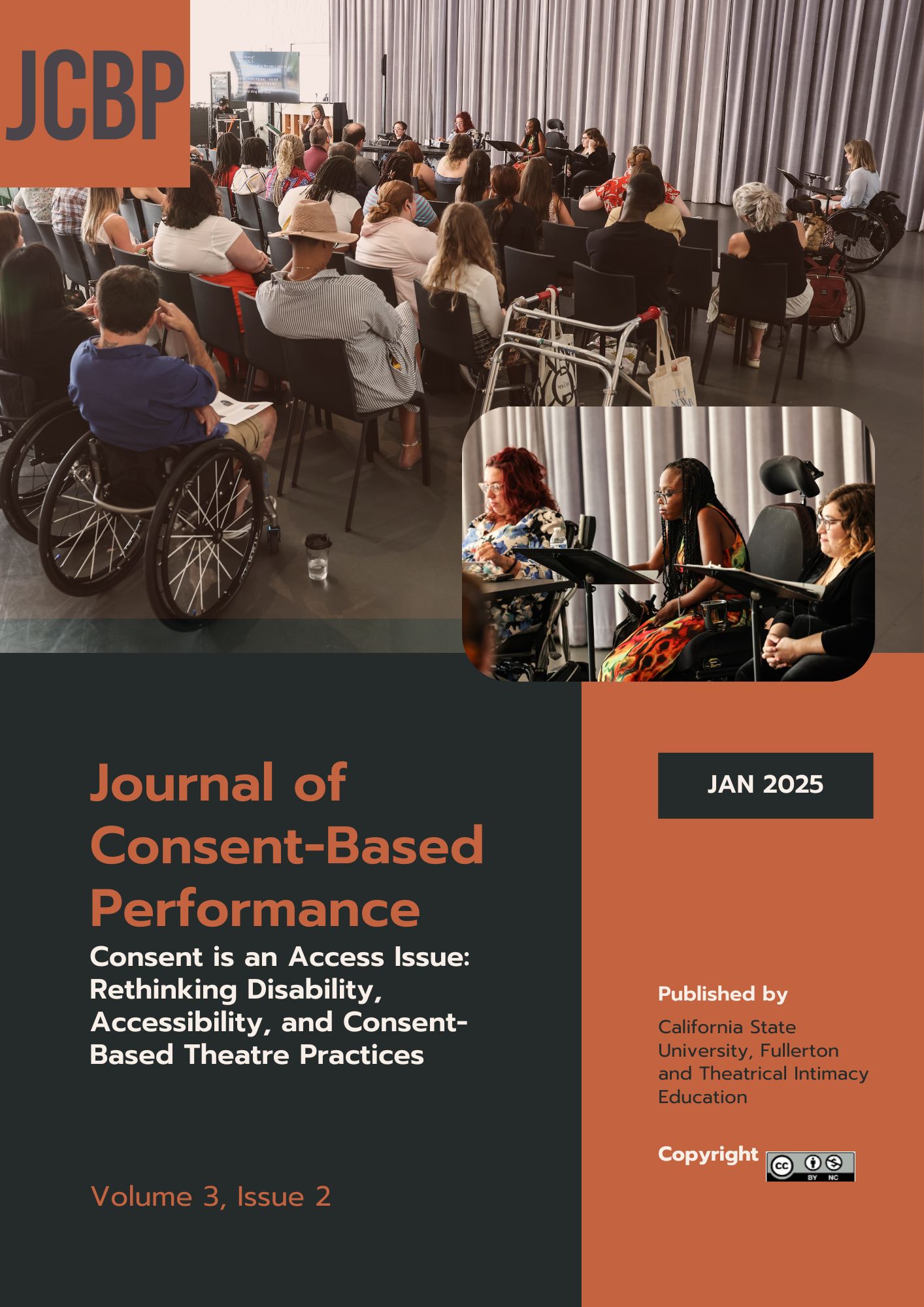Sensing Dance Finding Access Intimacy with a Dysmorphic Bodymind
Main Article Content
Abstract
“Sensing Dance” discusses returning to dance during the onset of COVID-19 to explore how dancing while quarantined can help us imagine practices in line with what Mia Mingus calls “access intimacy” (2017) specifically for people with eating disorders and body dysmorphia. In this essay, I ask: What would it mean for dance pedagogy to undergo a largescale reorientation that dismantles the hierarchical structures of both the teacher/student relationship and the ocularcentrism that tends to dominate our engagement with dance? What would it do to shift agency from instructor to student, and for the tyranny of the visual to be replaced by a more phenomenological felt sense? Beginning with a meditation on my experience taking Alexandra Beller’s Bartenieff Fundamentals™ classes, this essay discusses Jose Miguel Esteban and Devon Healey’s duet “The Breath and Movement of Blindness” (2022), and Heather Shaw and Krishna Washburn’s documentary screendance Telephone (2023). I argue that turning to the works and access practices of Esteban, Healey, Shaw, and Washburn as models can transform the way dance practitioners engage with dance as both an aesthetic and a pedagogical practice, thereby making it more accessible for chronically ill bodyminds that are often neglected when we think of access.
Article Details

This work is licensed under a Creative Commons Attribution-NonCommercial 4.0 International License.
Authors retain copyright of submissions to and publications while granting JCBP a non-exclusive CC-BY-NC 4.0 license.

